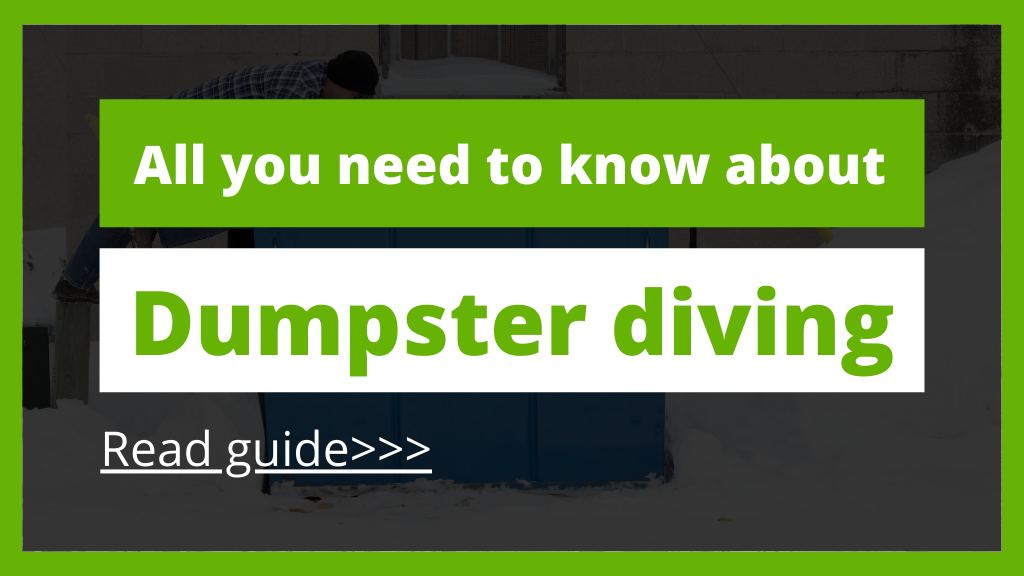55 Fun & Fascinating Facts About The Environment
If you want to help the environment, you’ll need to understand it. And a good way to understand the environment can be through learning some fun facts about the environment.
This world is a wonderful place with numerous mysteries within it. Though our environment has self-healing power, it’s not a black hole that won’t ever react to the harms caused by its population.
But it’s a matter of hope that some people are trying to conserve natural resources and restore the environment. To restore the Earth, the first thing that you should know is the environmental awareness facts.
In this article, I’m going to share 55 fun facts about the environment.
Interesting Fun Facts About The Environment
Let’s start with some fun facts about the environment.
Fun Facts About The Environment
- Saharan Dust Feeds Amazon’s Plants
Can you believe a gust of strong wind can take Earth’s hottest desert dust to 6000 miles away to the largest tropical rain forest of the Earth?
Every year micronutrient-rich dust from North Africa’s Sahara Desert is carried away across the North Atlantic to the Amazon rain forest.
- The population of the world is 2,00,000 more today than yesterday
Every day the world population is growing about 2,00,00. So, can you guess how much pressure we are putting on this Earth?
- The human population is only 1-10000 of the total weight of life
One of the interesting facts about the environment is that human beings will only weigh about 1/10,000 of the total weight of life.
- The combined weight of ants is more than that of humans
Can you believe that ants outweigh human beings? If you consider the weight of all ants on this planet, it’ll be higher than the weight of all human beings.
- You may be drinking the same water that a dinosaur had drunk once
The water resource on the Earth isn’t unlimited. One of the positive facts about the environment is that the resources are constant but always being recycled.
It’s not impossible that the water on your bottle once has been drunk by a dinosaur or an extinct species.
- Intense agriculture and cotton production have emptied a whole sea!
The Aral Sea in Uzbekistan has shrunk up due to excessive water use for cotton production and intense irrigation.
- Every year 50,000 species of tropical forests extinct
Approximately 50,000 species in the tropical forests are becoming extinct every year. That means roughly 137 species are being extinct each day.
- The environment kills humans
One of the shocking facts about the environment is it kills humans. Studies say that environmental pollutions directly or indirectly cause the death of over nine million people every year, which is 3 times the total deaths from AIDS, tuberculosis, and malaria.
- Fungi keep our surroundings clean
Fungi decompose dead matter and absorb oil spills from the soil and nuclear radiation. If fungus were not in the universe, our surroundings might be buried under layers of litter and debris.
- A Sperm whale’s poop neutralizes carbon dioxide
A sperm whale releases about 50 tons of iron with its poops in a year. This iron aids in the growth of phytoplankton which in return neutralizes the carbon dioxide.
- Elephants are like humans!
Besides, human-only Elephants have chins.
The most common fact between elephants and humans is that both don’t have natural survival instincts and learn their mothers’ behavior and survival capabilities. They also mourn the death of their loved ones like human beings.
- Bats aren’t blind!
We all may have heard that bats are blind. But among more than 1,200 bat species in the world, no species is blind. They use echolocation in the dark but also use eyesight when they want.
Facts About Trees
- General Sherman is 379.1 feet tall!
Do you know that world’s tallest tree’s name is General Sherman? This extremely tall coast redwood in California is 379.1 feet tall!
- World’s oldest tree is older than the pyramids!
World’s oldest tree is 5068 years old. This great basin bristlecone pine’s Latin name is Pinus Longaeva.
- Trees can communicate and defend themselves
If insects attack a tree, it alarms the nearby trees to prepare for their defense. Willow trees release some chemicals to signal other willows when webworms attack them. Other willows then make their leaves harder, secreting more tannin.
- Plants defend other species with chemical weapons to grow up in their territory
Black walnut trees are found to secrete a toxic chemical in the leaves and roots, which they discharge into the soil to impede the growth of other seedlings.
- Around 9 million trees are cut down yearly to produce toilet paper worldwide
Every day around 25,000 trees are cut down in the world to supply toilet paper in our bathroom. When you’re reading this article, 100 acres of rainforests are being cut down somewhere in the world.
Facts About Ocean
- Only 1% of the water of this Earth is usable for human
About 71 % of the Earth’s surface is covered with water. 97% of the water of this Earth is the salt water of the oceans.
But, did you know that among the 3% freshwater, only .03-.05% is usable for humans?
- 5 million tons of oil are carried away to the oceans every year
About five million tons of the total oil production in the world are carried away to the seas every year.
- Plastic products are causing death to over a million marine animals
Plastic bags, bottles, and other garbage are mixing in the ocean and killing a million marine animals every year.
- 78% of marine mammal’s lives are at risk for fishing in the sea
78% of marine mammals’ lives are at risk of getting caught in fishing nets and dying.
Facts About Waste
- The USA is the no.1 waste-producing country.
Americans are only 5% of the world population, but they produce 30% of the total waste.
- Americans burn around 10,000 gallons of gasoline every second
Every second, the Americans are burning 10,000 gallons of gasoline, releasing around 2,00,000 pounds of carbon dioxide.
- We throw away enough woods and papers to heat 50,000,000 homes
The Wood and paper we waste worldwide every year is enough to heat 50,000,000 homes for 20 years.
Plastic Waste
- Plastic wastes are going to rule the landfills!
About 10% of the total waste on the Earth is plastic waste. Only a small percentage of plastic (about 5% of the total use) is recycled every year.
- We are throwing 54.9 million plastic bottles every hour
About one million plastic beverage and water bottles are bought every 60 seconds worldwide, where about 54.9 million plastic bottles are discarded worldwide. Americans alone throw away more than 2 million plastic bottles in an hour.
- Every year 5 trillion single-use plastic bags are thrown away
Every year we use about 5 trillion single-use plastic bags. Each year the amount of plastic we throw away can circle the whole Earth four times.
- About 10 metric tons of plastics are moved to the pacific oceans every day
About 10 metric tons of plastics from daily products like juice straws, water, and soda bottles, grocery bags are moved into the Pacific Ocean each day only in Los Angeles.
- Americans use 25 billion Styrofoam cups every year
According to studies, Americans throw away 25 billion Styrofoam coffee cups each year.
Paper Waste
- Paper products occupy a large percentage of solid landfills
Approximately 13% of the solid waste covering our landfills comes from paper and paperboard.
- 100 million trees are cut down each year for junk mail advertising
More than 100 million trees are cut down each year only to produce junk mail.
- Junk mail production require huger energy than you might think
Each year, the production and disposal of junk mail cost as much energy as we need to power more than 3 million cars!
Junk mail’s production, delivery, and disposal produce greenhouse gases in the atmosphere that is almost equal to the output of 11 coal-fired power plants!
Facts About Recycling
- Paper can be recycled 6 times
Paper can be recycled up to 6 times. You will be surprised to know that if we recycle one single edition of the New York Times newspaper, we could save 75,000 trees.
- Aluminum can be recycled forever
Recycled aluminum retains the same quality. Therefore, aluminum products can be recycled forever.
- A can recycled aluminum can run a TV for 3 hours
We use 80 trillion aluminum cans every year. From one can of aluminum, we can restore enough energy that will run a TV for three hours!
- Glasses take thousands of years to decompose
The glass bottle on your kitchen table can take more than 4,000 years to decompose in the soil.
- Plastic takes thousand years to decompose
Styrofoam and or any plastic products will not decompose until 1000 years.
Facts About Greenhouse Gases
- Cows release greenhouse gases through burping and farting
Did you know that cow releases about 200-400 pounds methane gas every year only through farting and burping?
- Greenhouse gases aren’t always harmful
A moderate amount of greenhouse gases trap heat and keep the Earth warm to allow humans, animals, and plants to survive.
- A passenger vehicle can emit 4.6 metric tons of carbon dioxide each year
A passenger vehicle alone emits 4.6 metric tons of carbon dioxide in a year.
- The Ozone layer is supposed to be healed entirely by 2069
According to the UNEP, the ozone layer of the atmosphere will be fully recovered by 2069.
- A hot water shower produces a significant amount of carbon dioxide
If you take a normal shower, you can minimize a considerable amount of carbon dioxide emissions.
Facts about Climate Change
- 2016 was the warmest year on record
According to NASA, 2016 was the hottest year in the 1880-2019 record. 2020 has been declared the second hottest year.
- The highest concentration of carbon dioxide in 2020
The concentration of carbon dioxide in the atmosphere has risen to 416 ppm in 2020, the highest in human history.
- Nature-based solutions hardly get climate funds
Tropical forests intake carbon and prevent climate change scenarios. But, only 3% of climate funding is allotted for nature-based solutions.
Facts About Sustainable Campus
- 530,000 tons of food are wasted at school cafeterias every year
67 pounds of waste is produced from the school lunch for each student every year. In a report of WWF, 530,000 tons of food waste is estimated at school cafeterias each year.
- A college student produces roughly 640 pounds of solid waste every year
An average college student throws away 500 disposable cups and uses 320 pounds of paper in a year.
- Only a few students come to campus on foot
In 1969, about 50% percent of students went to school on foot or by bike. In a study of 2001, the percentage has been reduced to 16%.
- 11,700 tons of paper waste in a year
According to a survey of Alameda County schools, they dispose of over 11,700 tons of paper waste each year. One study says that if 133,000 schools use recycled paper, about 6 million trees will be saved each year. This is certainly one of the most exciting fun facts about the environment I’ve come upon.
- Green schools use 33% less energy and 32% less water
An average green school saves $100,000 on the annual operating costs with that they buy 200 new computers.
- $7.5 billion budget just on energy
The schools of the USA spend about $7.5 billion on energy each year. This amount is more than the budget for textbooks and computers.
Facts About Environmental Justice
- Most of the waste landfills sites are in black community’s area
A study in 1983 says that 75% of the risky waste landfill sites in the 8 southeastern states were situated in the areas where poor black communities live.
- 75% of African Americans had to live near the industrially polluted area
3 or 4 out of 5 African Americans have to live near the place with the most significant health risks from industrial pollution. Exposure to chemicals or coal-fired power plants affected these people by cancer, chronic illness, congenital disabilities, premature death, etc.
- Children of poor communities are exposed to a high level of lead
Children of color in poor areas are 9 times more exposed to lead levels than economically advantaged people’s children.
- Black communities were given a place in the polluted neighborhoods regardless of their income
Another study of 2008 said that Black families whose yearly income was $50,000- $60,000 had to live in more polluted neighborhoods than white families whose annual income was below $10,000.
- Black people weren’t welcomed in the recreational spots
Black people didn’t feel welcomed in the national parks or other recreation spots.
What Is Sustainability?
Sustainability refers to improving our lives without causing damage to our ecosystem.
Sustainability does not mean compromising the needs of the present or future generation. Instead, it focuses on the safeguarding of natural resources. Another main focus of sustainability is restoring the ecological balance that we’ve destroyed so far.
However, sustainability isn’t concerned only about natural resources but also social and economic resources.
Why Is Environment Important?
If the Earth is our home, the environment meets all our needs-food, air, water, and other essentials. Not only a healthy life, but the existence of our life on this Earth depends on the environment. If the environment, biodiversity, and ecosystem are polluted or affected by our activities, we’ll be the victims of that, directly or indirectly.
For ensuring a safe and livable world for our future generations, taking care of the environment is the sole option that we’ve.
Why Is Environmental Sustainability Important?
These fun facts about the environment show the extent of damage our modern lifestyle has done to the Earth. If we aren’t conscious of environmental sustainability, we’ll soon run out of fossil fuels and make drastic changes to the Earth and its beyond repair resources.
The fertility of land and water capacity is already at stake to supply the food for the ever-growing population. Global warming isn’t just the hot topic of the newspaper anymore. The increased temperature has started showing its effects already. The icebergs are melting down, increasing the height of the sea.
Severe weather, floods, droughts, wildfires are being extreme in different parts of the world. If we don’t want to see human beings as extinct species, environmental sustainability is the only way to go for.
How To Improve Environmental Sustainability?
To improve environmental sustainability, you have a lot to do as an individual or a crowd. You can try the following ways to have an eco-friendly lifestyle:
Save energy to reduce carbon emissions.
- Save water
- Pick up reusable water bottles and eco-friendly alternatives to plastic.
- Use less paper.
- Try to use renewable energy and produce zero waste at home.
- Don’t waste food. And eat less meat.
- Try to go on foot or cycle. Drive less.
- Pick up eco-friendly cleaning products.
Conclusion
From these fun facts about the environment, you can imagine the picture of the Earth’s present condition. Since our Earth is giving place to 2,00,000 new lives every day, you don’t have to read the studies to know how much pressure we’re putting on the Earth’s resources and why it has been urgent to improve environmental sustainability.
References:
- Green Schools
- Conservation International
- The World Counts
- One Tree Planted
- Conserve Energy Future
- Gateway Green
- The Fact Site
- Sustained Kitchen
- Precision Landscape & Tree
- Eco Watch
- Lifestyle Magazine

















